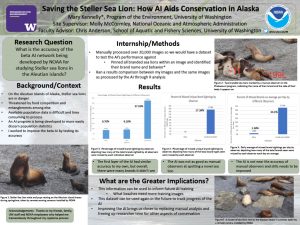Saving the Steller Sea Lion: How AI Aids Conservation in Alaska
Arctic Mammals are increasingly threatened through climate change, with Steller Sea Lion populations dropping over 90% in the last 30 years on the Aleutian Islands of Alaska. Population research is time consuming; for this reason, the National Oceanic and Atmospheric Administration (NOAA) is developing an AI to take over the task of image processing. The aim of my research was to discern the accuracy of beta AI models being implemented by NOAA in population status research for the Steller Sea Lion. I processed over 20,000 images taken by remote camera sensors in Alaska, looking for branded sea lions. With this, NOAA can track branded individuals over a lifetime and discern things such as age of reproduction and number of offspring. After image processing, I performed a statistical coding analysis through R that juxtaposed my manual image processing with that done by an AI model. I found that the AI is not near the accuracy of human image processing, and the AI must improve its overall missed brand rate by over 20% before it can thoughtfully replace manual processing. My results provided insight into which beaches the AI needed more training images of, and my analysis can be run against the AI after future improvements to track the model’s progress. Once the AI is successfully trained it can efficiently take population status data on the Steller Sea Lion, not only providing us better insight to their depletion, but also giving NOAA researchers the bandwidth for more marine mammal conservation efforts with the time they save from automation.
